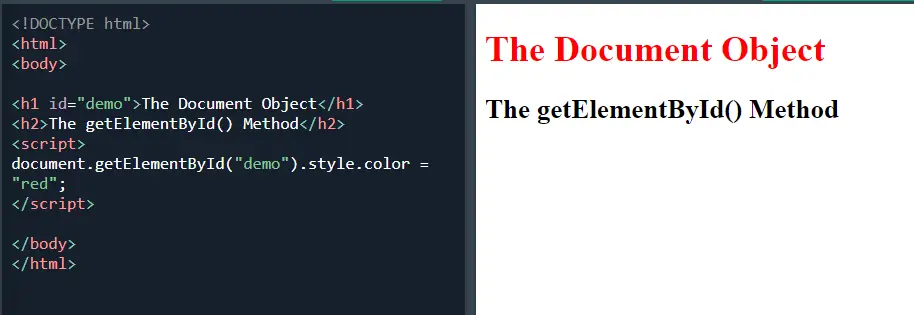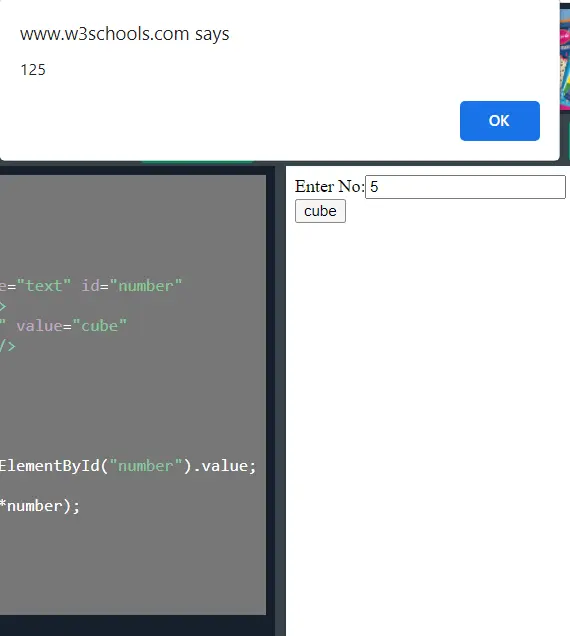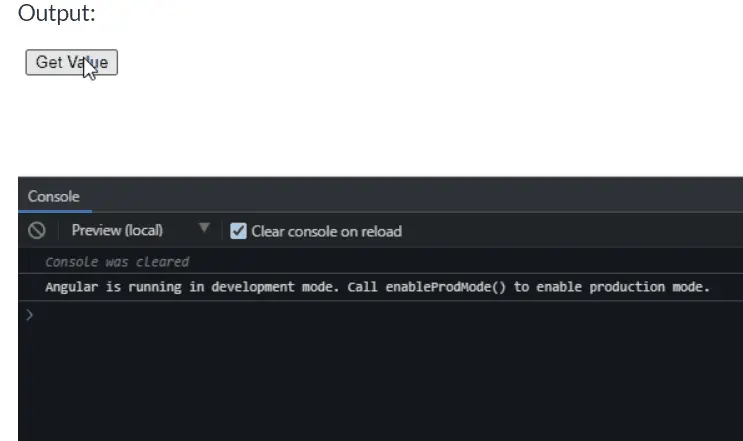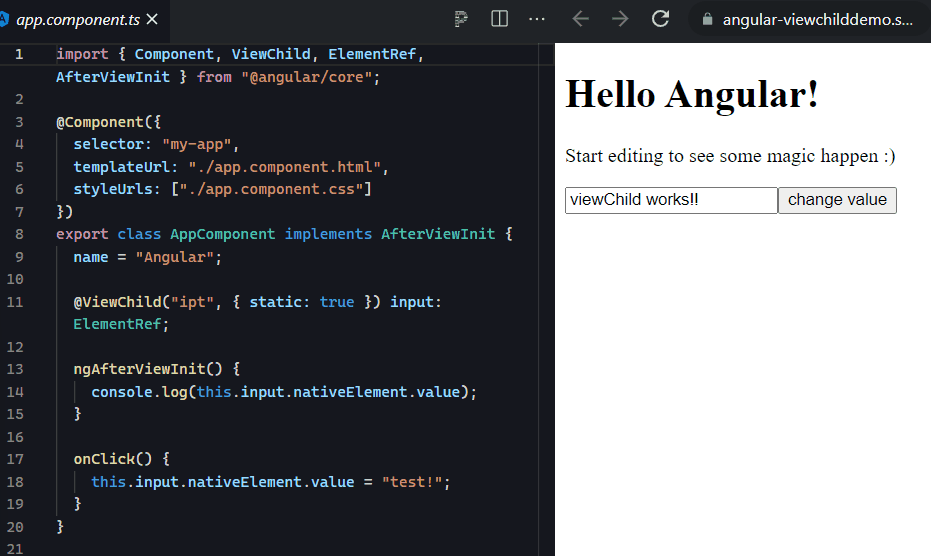在 Angular 中使用 TypeScript 的 getElementById 替换
-
TypeScript 中的
document.getElementById()方法 -
在 Angular 中使用 TypeScript 使用
ElementRef作为getElementById替换

本教程指南提供了使用 TypeScript 在 Angular 中替换 document.getElementById 的简要说明。
这还通过代码示例提供了用于在 Angular 中 getElementById 的最佳方法。我们还将了解 TypeScript 中 DOM querySelector 的用途。
首先,让我们了解一下 TypeScript 中的 document.getElementById 方法以及它在开发人员社区中流行的原因。
TypeScript 中的 document.getElementById() 方法
document.getElementById() 是一个预定义的 JavaScript(以及 TypeScript)方法,可用于操作 document 对象。它返回一个具有指定值的元素,如果该元素不存在,则返回 null。
document.getElementById() 是开发人员社区中用于 HTML DOM 的最常见和流行的方法之一。
要记住的一个重要点是,如果两个或多个元素具有相同的 id,document.getElementById() 将返回第一个元素。
现在,让我们看一些编码示例,以更好地了解它们的目的和用法。
考虑带有一些具有唯一 demo id 的文本的 h1 标签。现在,在 scripts 部分中,如果我们想要针对特定标签,我们使用 document 对象中可用的 getElementById() 方法。
<!DOCTYPE html>
<html>
<body>
<h1 id="demo">The Document Object</h1>
<h2>The getElementById() Method</h2>
<script>
document.getElementById("demo").style.color = "red";
</script>
</body>
</html>
输出:

现在让我们考虑一个更动态的例子:一个输入字段接受一个数字并返回它的立方值。
<!DOCTYPE html>
<html>
<body>
<form>
Enter No:<input type="text" id="number" name="number"/><br/>
<input type="button" value="cube" onclick="getcube()"/>
</form>
<script>
function getcube(){
var number=document.getElementById("number").value;
alert(number*number*number);
}
</script>
</body>
</html>
输出:

现在,让我们看看使用 TypeScript 在 Angular 中的 getElementById 替换。
在 Angular 中使用 TypeScript 使用 ElementRef 作为 getElementById 替换
AngularJs 的 ElementRef 是 HTML 元素的包装器,包含属性 nativeElement 并保存对底层 DOM 对象的引用。使用 ElementRef,我们可以使用 TypeScript 在 AngularJs 中操作 DOM。
通过使用 ViewChild,我们可以在组件类中获取 HTML 元素的 ElementRef。Angular 允许在构造函数中请求组件的指令元素时注入 ElementRef。
使用 @ViewChild 装饰器,我们使用类中的 ElementRef 接口来获取元素引用。
考虑以下 main.component.html 文件中 AngularJs 中的代码示例。我们有一个带有事件的按钮和一个具有唯一 ID myName 的 div:
# angular
<div #myName></div>
<button (click)="getData()">Get Value</button>
输出:

示例 1(app.component.ts):
#angular
import { Component, VERSION, ViewChild, ElementRef } from "@angular/core";
@Component({
selector: "my-app",
templateUrl: "./main.component.html",
styleUrls: ["./app.component.css"]
})
export class AppComponent {
name = "Angular " + VERSION.major;
@ViewChild("myName") myName: ElementRef;
getData() {
console.log(this.myName);
this.myName.nativeElement.innerHTML = "I am changed by ElementRef & ViewChild";
}
}
输出:

使用 @ViewChild 装饰器,我们在类中的 ElementRef 接口的帮助下获取输入的引用。然后,我们使用带有此引用的 getData() 函数更改其值。
示例 2(app.component.ts):
import { Component, ViewChild, ElementRef, AfterViewInit } from "@angular/core";
@Component({
selector: "my-app",
templateUrl: "./app.component.html",
styleUrls: ["./app.component.css"]
})
export class AppComponent implements AfterViewInit {
name = "Angular";
@ViewChild("ipt", { static: true }) input: ElementRef;
ngAfterViewInit() {
console.log(this.input.nativeElement.value);
}
onClick() {
this.input.nativeElement.value = "test!";
}
}
输出:

这将获取输入字段的引用并在单击按钮时更改其内部文本。
Ibrahim is a Full Stack developer working as a Software Engineer in a reputable international organization. He has work experience in technologies stack like MERN and Spring Boot. He is an enthusiastic JavaScript lover who loves to provide and share research-based solutions to problems. He loves problem-solving and loves to write solutions of those problems with implemented solutions.
LinkedIn